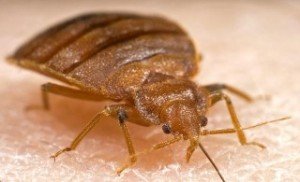A recent change to bedbug fumigation will make it more cost-effective to get rid of the pests, thanks to research from Kansas State University.
The phrase “sleep tight, don’t let the bedbugs bite” might have become more common in the past decade because bedbug infestations in the United States have grown as travel has increased. The parasites have built up resistance to many of the insecticides used to kill them, adding to the problem.
Dow AgroSciences asked Tom Phillips, an entomology professor at Kansas State University who specializes in fumigant gases, to test a gas used to control drywood termites and determine if it could be used at a lower dosage to kill bedbugs. Phillips conducted a dose response study to find the lowest level of sulfuryl fluoride, known as Vikane, needed to kill bedbugs at all life stages.

“Fumigation is affecting the things that are breathing and the more breathing, the more mortality,” Philips said. “Eggs are the most tolerant life stage of most insects and are harder to kill with fumigant gas. The embryo in the egg still respires and can be killed, it just takes longer because the gas has to get past the eggshell.”
Phillips found that Vikane used at 1.9-fold the termite rate eliminated bedbug adults, late-instar nymphs and eggs. The U.S. Environmental Protection Agency recently approved the label change, reducing the amount of chemical used to treat bedbugs by one-third.
“This is a good thing because we can be more efficient by using less gas. And from a consumer’s standpoint, it will cost less money because less chemical is being used,” Phillips said.
Bedbugs are most prevalent where groups of people live, especially in transient housing such as hotels, apartment buildings and nursing homes.
Source: Kansas State University
Was this article valuable?
Here are more articles you may enjoy.

 Tesla, EEOC Plan Talks to Settle Factory Racism Suit
Tesla, EEOC Plan Talks to Settle Factory Racism Suit  Cyber Breach Affected 750,000 Canadian Investors, Regulator Says
Cyber Breach Affected 750,000 Canadian Investors, Regulator Says  The Return Period for An LA Wildfire-Scale Event May Be Shorter Than You Think
The Return Period for An LA Wildfire-Scale Event May Be Shorter Than You Think  California Bill Would Require Insurer Claims Handling Plans, And Double Penalties
California Bill Would Require Insurer Claims Handling Plans, And Double Penalties 